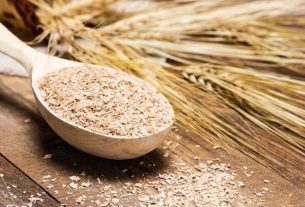Xanthan gum is a food additive rich in soluble fiber, a type of fiber that forms a type of gel in the stomach and increases the time it takes to digest food, prolonging the feeling of satiety and thus helping with weight loss.
Furthermore, xanthan gum helps combat constipation, as it increases the amount of water in the intestine, hydrating and softening the stool, which facilitates evacuation. See other foods that also help fight constipation.
Obtained from the fermentation of foods, xanthan gum is widely used by industry in the manufacture of foods, cosmetics and medicines. Furthermore, xanthan gum is also found in health food stores and pharmacies, and can be used to thicken sauces, juices and desserts, and increase the softness of breads and cakes, for example.

What is it for
Xanthan gum can be used to:
1. Fight constipation
Xanthan gum combats constipation, as it is rich in soluble fiber, a type of fiber that facilitates the hydration and softness of stools, facilitating bowel movements.
However, it is important to remember that to help combat constipation, you should drink plenty of water, to hydrate the gum and facilitate the elimination of feces. Know the recommended amount of water for each person.
2. Help with weight loss
Because it is rich in fiber, xanthan gum increases water absorption and forms a type of gel in the stomach, prolonging food digestion time and increasing satiety, thus helping with weight loss. See other tips to increase satiety.
3. Lower blood cholesterol
Xanthan gum is rich in fiber that reduces the absorption of fat from food in the intestine, helping to reduce blood cholesterol levels and thus preventing the emergence of diseases such as atherosclerosis, heart attack and stroke.
4. Prevent diabetes
Xanthan gum slows down the absorption of sugar from food, helping to control blood glucose levels, preventing insulin resistance and diabetes.
Furthermore, xanthan gum also helps control sugar levels in people who already have diabetes, preventing the risk of complications from the disease, such as kidney damage, cataracts and stroke, for example. Learn about the main complications of diabetes.
5. Makes food intake easier
Xanthan gum increases the viscosity of liquids, such as soups, sauces and juices, making these foods easier to ingest, and is therefore recommended for people with illnesses that can cause difficulty swallowing, such as Parkinson’s disease, stroke and multiple sclerosis.
How to consume
Xanthan gum is widely used in the industry for the production of cosmetics, medicines and foods, such as cookies, ice cream, cakes, sauces, gluten-free foods and fruit juices, for example.
Furthermore, xanthan gum can also be used to thicken juices and sauces, and improve the softness of breads and cakes, for example. The generally recommended amount of xanthan gum is up to 15g (1 and 1/2 tablespoons) per day for adults.
Side effects and contraindications
Xanthan gum can increase the frequency of bowel movements, cause diarrhea and stomach pain in some people. Excessive consumption of xanthan gum can increase the production of intestinal gas and cause abdominal bloating.
People who use medication to control diabetes should talk to their doctor before using xanthan gum, as the gum can alter the effect of the medication.
Xanthan gum is not recommended for babies, nor is it recommended for people with diarrhea, fecal incontinence and people with severe food allergies, as xanthan gum is produced from foods of plant origin, such as soy, wheat, corn and dairy products. .
Bibliography
- FUWA, Masako; NAKANISHI, Yukiko; MORITAKA, Hatsue. Effect of Xanthan Gum on Blood Sugar Level after Cooked Rice Consumption. Food Science and Technology Research. Vol.22. 1.ed; 117_ 126,, 2016
- TANAKA, Hiroshi et al. The Addition of Xanthan Gum to Enteral Nutrition Suppresses Postprandial Glycemia in Humans. Journal of Nutritional Science and Vitaminology. Vol.64. 4.ed; 284-286, 2018
- ROFES, L. et al. The effects of a xanthan gum-based thickener on the swallowing function of patients with dysphagia. Alimentary Pharmacology & Therapeutics . Vol.39. 10.ed; 1169-1179, 2014
- BORGES, D, Caroline; VENDRUSCOLO, T, Claire. Xanthan Gum: characteristics and operational production conditions. Biological and Health Sciences. Vol.29. 2.ed; 171-187, 2008

Sign up for our newsletter and stay up to date with exclusive news
that can transform your routine!
Warning: Undefined array key "title" in /home/storelat/public_html/wp-content/plugins/link-whisper-premium/templates/frontend/related-posts.php on line 12
Warning: Undefined array key "title_tag" in /home/storelat/public_html/wp-content/plugins/link-whisper-premium/templates/frontend/related-posts.php on line 13



